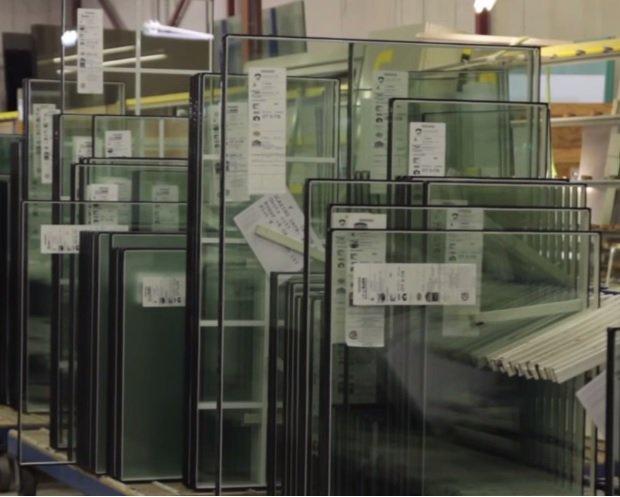Some customers are very interested in the manufacturing processes for glass, so we decided to give you more information today on how Low-E glass is made. Low-E is short for “low-emissivity.” These coatings are great for several purposes: they keep the warmth inside your home during the winter, they reduce harmful effects of UV radiation, and provide a level of shading to windows in sunny rooms.
Almost all vinyl windows in Canada today come standard with a low-e coating. How much Low-E is ideal depends on which room the window is located in relative to the Sun.
The great thing is, as a homeowner you have the option to choose how many additional coatings of Low-e to add to each window.
There are three common applications of Low-E coatings for residential windows:
LoE 180 – the standard low-emissivity coating helps keep the warmth inside your home and reduces harmful effects of UV. Most companies that manufacture vinyl windows offer LoE 180 included in the price of the window. Recommended for north facing windows.
LoE 272 – a more advanced coating for even better insulation and reduced heat loss. Great for rooms all around the house.
LoE 366 – has the same insulating values as LoE272 but with added protection from the sunshine. Reduces up to 95% of damaging UV radiation. Especially recommended for unshaded South and West facing windows.
Low-e windows are made two ways, one is a “soft coat” Low-E which is made by applying the coating in a process called sputtering, where atoms are ejected from a solid target by bombarding the target with energetic particles, to the already manufactured glass. This process applies a film of silver to the glass. Inside the coating chamber, there are positive ions and glowing plasma that are attracted to a negatively charged target, such as a silver coating. The ions strike the target with such force that the material deposited on the glass is injected atom by atom. A sputtered coating like the one described is called a “soft coat” because the coating remains rather delicate and must be protected in the sealed unit.
The second way Low-E glass is made is called “hard coat” Low-E, where a low emissivity layer of indium tin oxide is applied when the glass is still in its molten stage and just beginning to harden. Due to the high temperature of the production, these kinds of low-E coatings are also referred to as “pyrolytic” Low-E
Watch the video below to how these coatings work, and for more information on Low-E coating read what we wrote here.
Check out these window replacement articles:
Learn about energy efficiency features in modern vinyl windows
Find out how much new windows should cost
See our gallery of finished projects

